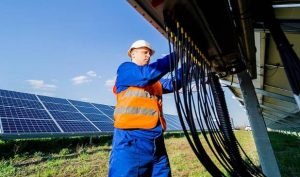Adding Extra Solar Panels: What You Need to Know
When the conversation turns towards sustainability and energy efficiency, solar power often shines as a leading topic. Many homeowners and businesses who have already embarked on their solar journey wonder about expanding their system to meet increased energy needs or to capitalize on the financial benefits of generating more clean energy. If you're considering enhancing your setup by adding extra solar panels, here’s a deep dive into what you need to know before taking the plunge.

Evaluate Your Energy Needs
Know your numbers. Before adding more panels, assess your current and projected energy usage. The average American household consumes about 10,649 kWh annually, but factors like home size, lifestyle changes, and the addition of energy-intensive appliances can increase this number. Calculate your energy goals to determine how many more panels you'll need to meet your needs.
System Compatibility and Capacity
Check your current system's scalability. The capacity of your inverter is a critical factor since it dictates how much power can be converted for use in your home. If your existing inverter can handle the increase, great! If not, you might need an upgrade or an additional inverter. Compatibility between new and existing panels, as well as the overall efficiency of the expanded system, also needs consideration.
Space and Placement
Space is a premium. Ensure you have enough real estate on your roof or land for the additional panels. Optimal placement is crucial for maximizing sunlight exposure throughout the year. Professional assessment can help determine the best configuration that accounts for seasonal changes and potential shading from new constructions or tree growth.
Permits and Regulations
Stay compliant. Navigating local building codes and regulations is a must. Some areas have strict guidelines on how much of your roof can be covered by solar panels or specific requirements for electrical systems. Additionally, your utility company may have policies on solar system expansions, especially if you're planning to sell back excess power through net metering.
Financial Implications
Crunch the financial data. The cost of solar panels has significantly decreased, making expansion more affordable. However, consider the upfront costs against potential savings and incentives. Federal tax credits, local rebates, and state incentives can dramatically reduce the payback period of your investment. The long-term benefits often outweigh the initial expenditure, but it’s wise to run the numbers for your specific situation.
Choosing the Right Installer
Partner with professionals. Expanding your solar panel system isn't a DIY project. Selecting an experienced solar installer who is familiar with both the technical and regulatory aspects of solar expansions is crucial. They can ensure that your system's expansion is seamlessly integrated, optimizing performance and ensuring compliance with all local codes and standards.
Installation and Integration
Once you've navigated the preparatory steps, the actual installation of additional panels and potentially upgrading your inverter are the next milestones. Ensuring your expanded system is correctly integrated with the existing setup to function as a cohesive unit is paramount for optimal energy production.
Add More Solar Panels to Existing System
In summary, expanding your solar system by adding extra panels is a viable and often beneficial decision that can meet increased energy demands, enhance property value, and contribute to a more sustainable lifestyle. By thoroughly evaluating your needs, ensuring system compatibility, and working with the right professionals, you can make an informed decision that amplifies your investment in clean energy. Remember, every additional panel not only contributes to reducing your carbon footprint but also to building a sustainable future for generations to come.